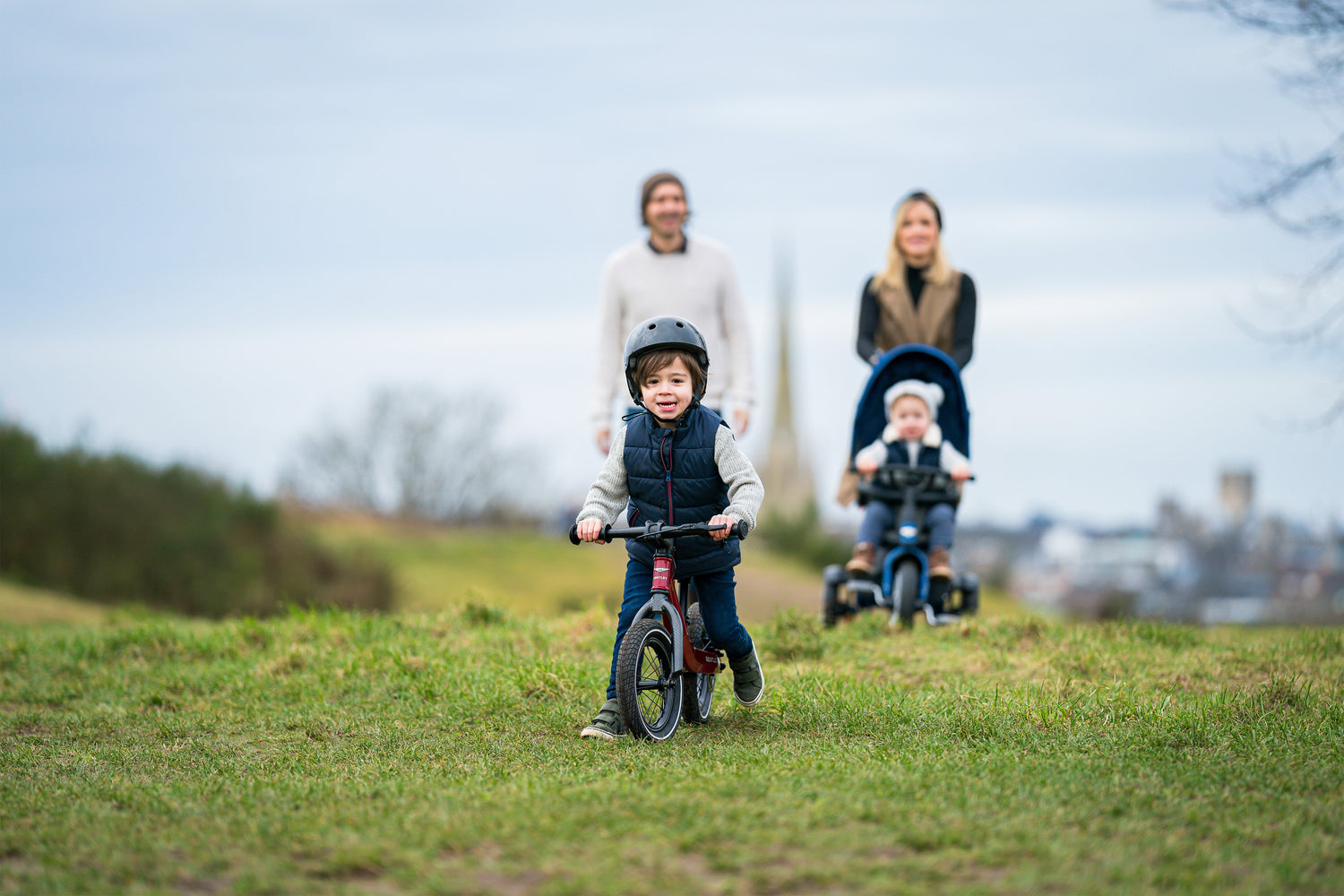Choosing the right mode of transportation for your child involves considering various factors, including their age, development stage, and comfort level. We'll delve into the distinctions between kid balance bicycles and kid tricycles to help you make an informed decision about which option is best suited for your little one's needs.
Kid Balance Bicycle: A kid balance bicycle, also known as a balance bike, is a pedal-less bike designed to help children develop balance, coordination, and steering skills. Here are the key features and benefits of kid-balance bicycles:
-
Balance Development: The primary purpose of a balance bike is to teach children how to balance on two wheels. By propelling themselves forward using their feet and gliding, children learn to maintain equilibrium, an essential skill for transitioning to pedal bikes.
-
Coordination Enhancement: Riding a balance bike encourages children to use their arms and legs simultaneously, promoting coordination and motor skills' development.
-
Confidence Building: With their feet firmly on the ground, children feel in control and confident while riding a balance bike. This confidence boost lays a solid foundation for future cycling endeavors.
-
Smooth Transition to Pedal Bikes: Once children master balance bikes, they typically find the transition to pedal bikes much smoother, as they've already developed the core skills needed for cycling.
Kid Tricycle: A kid tricycle, commonly referred to as a trike, features three wheels and provides stability and support for younger children who are still mastering balance and coordination. Here are the key features and benefits of kid tricycles:
-
Stability: Tricycles offer enhanced stability, thanks to their three-wheel design, which prevents tipping and allows young children to ride with confidence.
-
Early Cycling Introduction: Tricycles serve as an excellent introduction to cycling for young children, allowing them to pedal and steer without the challenge of balancing on two wheels.
-
Safety and Control: Many kid tricycles are equipped with safety features such as low center of gravity, sturdy construction, and easy-to-reach handlebars, providing parents with peace of mind while their children ride.
-
Versatility: Tricycles come in various designs, including classic pedal models and push tricycles that allow parents to assist their children as they learn to ride.

In conclusion, the primary difference between kid balance bicycles and kid tricycles lies in their design and purpose. Balance bikes focus on developing balance and coordination skills, making them ideal for children who are ready to master two-wheeled biking. On the other hand, tricycles offer stability and support, making them suitable for younger children who are still building their confidence and motor skills. By understanding these differences, you can choose the perfect ride to support your child's cycling journey and foster a lifelong love for biking.































Leave a comment
This site is protected by hCaptcha and the hCaptcha Privacy Policy and Terms of Service apply.